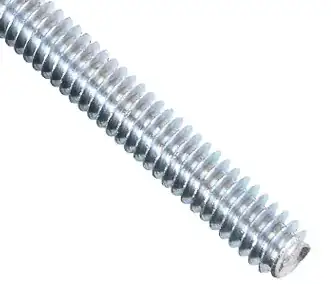On my Wimshurst machine which is built similar but not the same as http://steampunkworkshop.com/how-build-wimshurst-influence-machine-part-1, I'm using a threaded rod that comes out of the Leyden jar where my collecting comb and spark gap rod connects to.
I'm worried that a threaded rod will leak out too much voltage, which is why you have to put a ball over all points in the first place. I'm not sure if a threaded screw will act in the same way or if I should be fine. If I can use the screw rod listed below let me know!
